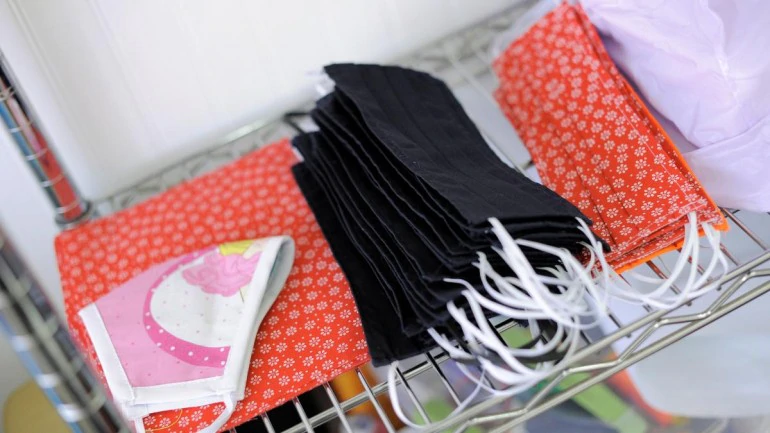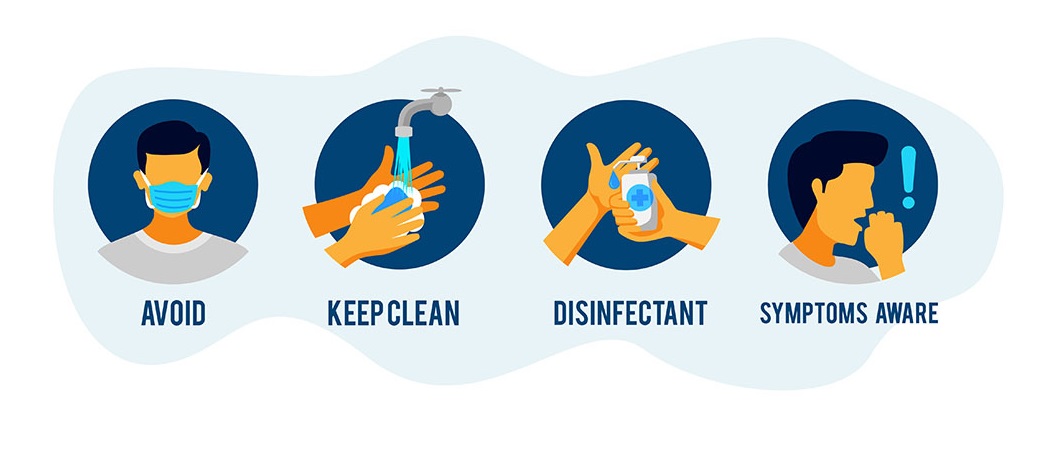A Cloth Face Covering Should:
- it snugly but comfortably against the side of the face
- be secured with ties or ear loops
- include multiple layers of fabric
- allow for breathing without restriction
- be able to be laundered and machine dried without damage or change to shape
This article follows guidelines pertaining to up-to-date CDC recommendations. Here’s How To Make Cloth Masks in a DIY format!

The time has come to cover your face for the greater good. Circumstances have forced mankind to resort to innovative measures to prevent contracting the novel coronavirus. As of April 3rd, the Centers for Disease Control and Prevention now recommends all citizens voluntarily wear a cloth face mask for essential trips out of the house to the grocery store, doctor, or other public places where the 6-foot social distancing rules may be difficult to maintain. In short, most places.
Wearing a cloth mask might help protect people around you, if you happen to be infected with Covid-19 but do not have symptoms yet. (These are Covid-19’s typical symptoms.) Some individuals infected with Covid-19 never show symptoms or do not get very sick, especially if they are young. Basically, these masks mainly help others, not you—though if used properly, a cloth mask may help you avoid touching your face and infecting yourself while out of the house.
Be sure to frequently wash masks in the washing machine with regular detergent.
A Frequent Reminder | COVID Precaution

Whether you are wearing a face covering or not, the CDC still recommends that you:
- Wash your hands regularly. Use soap and water, and wash them for at least 20 seconds. Hand sanitizer is acceptable to use if you are unable to wash your hands.
- Cover your face when coughing with a tissue or the inside of your elbow.
- Avoid touching your face, because you could transmit the virus from your hands into your mouth.
- Stay at home, except for essential trips outside like trips to the grocery store or to see your doctor. This is also called sheltering in place.
- Practice social distancing by staying at least 6 feet away from other people. The international community also recommends avoiding gatherings of 10 or more people, which should be easy because you’re staying at home.
- Clean and disinfect frequently-touched surfaces daily (here’s our Covid-19 cleaning guide).
A Few Rules To ‘Mask’ That Ego | Using Cloth Masks
- Do not buy and hoard medical masks. Health care professionals are already facing a devastating shortage in supplies, and we should not use protective masks that ill patients and health care workers may need.
- Do not put a face mask on kids under 2 years old—or anyone who has difficulty breathing or might be unable to remove the mask themselves.
- Do not remove a mask by its mouth area. Grab it by the straps. Wash your hands after touching it.
- Do not just wear a standard bandana or scarf. Follow the instructions below to create a mask that has multiple layers and more tightly covers your face.

Cloth face coverings fashioned from household items or made at home from common materials at low cost can be used as an additional, voluntary public health measure.
Cloth face coverings should not be placed on young children under age 2, anyone who has trouble breathing, or is unconscious, incapacitated or otherwise unable to remove the mask without assistance.
The cloth face coverings recommended are not surgical masks or N-95 respirators. Those are critical supplies that must continue to be reserved for healthcare workers and other medical first responders, as recommended by current CDC guidance.
To make things simpler, here’s a little CDC-inspired questionnaire for all concerned people:
Should cloth face coverings be washed or otherwise cleaned regularly? How regularly?
Yes. They should be routinely washed depending on the frequency of use.
How does one safely sterilize/clean a cloth face covering?
A washing machine should suffice in properly washing a face covering.
How does one safely remove a used cloth face covering?
Individuals should be careful not to touch their eyes, nose, and mouth when removing their face covering and wash hands immediately after removing.
The Procedure | How To Make Cloth Masks
Mechanical – Manual setup instruction
Materials required for making a cloth mask (MECHANICAL):
- Two 10”x6” rectangles of cotton fabric
- Two 6” pieces of elastic (or rubber bands, string, cloth strips, or hair ties)
- Needle and thread (or bobby pin)
- Scissors
- Sewing machine
Method
- Cut out two 10-by-6-inch rectangles of cotton fabric. Use tightly woven cotton, such as quilting fabric or cotton sheets. T-shirt fabric will work in a pinch. Stack the two rectangles; you will sew the mask as if it was a single piece of fabric.

- Fold over the long sides ¼ inch and hem. Then fold the double layer of fabric over ½ inch along the short sides and stitch down.

- Run a 6-inch length of 1/8-inch wide elastic through the wider hem on each side of the mask. These will be the ear loops. Use a large needle or a bobby pin to thread it through. Tie the ends tight.Don’t have elastic? Use hair ties or elastic head bands. If you only have string, you can make the ties longer and tie the mask behind your head.

- Gently pull on the elastic so that the knots are tucked inside the hem. Gather the sides of the mask on the elastic and adjust so the mask fits your face. Then securely stitch the elastic in place to keep it from slipping.

Non-Mechanical Method | No Sewing Machine
Materials required for a Quick–Cut T-Shirt Face Covering:
- T-shirt
- Scissors
Cut the shape of a mask through the T-Shirt. Make a pair of threads from the remaining cloth and mix-match the materials to make a mask. Use a sewing pin and thread around the shape of the mask. Make sure that the threads are well-suited to the length you prefer.
Well, there you have it folks! This was how to make cloth masks at home. We’ll add a video soon to make things easier to understand. In the meantime, hit me with a comment and let’s have a discussion!
Good luck and stay at home!











